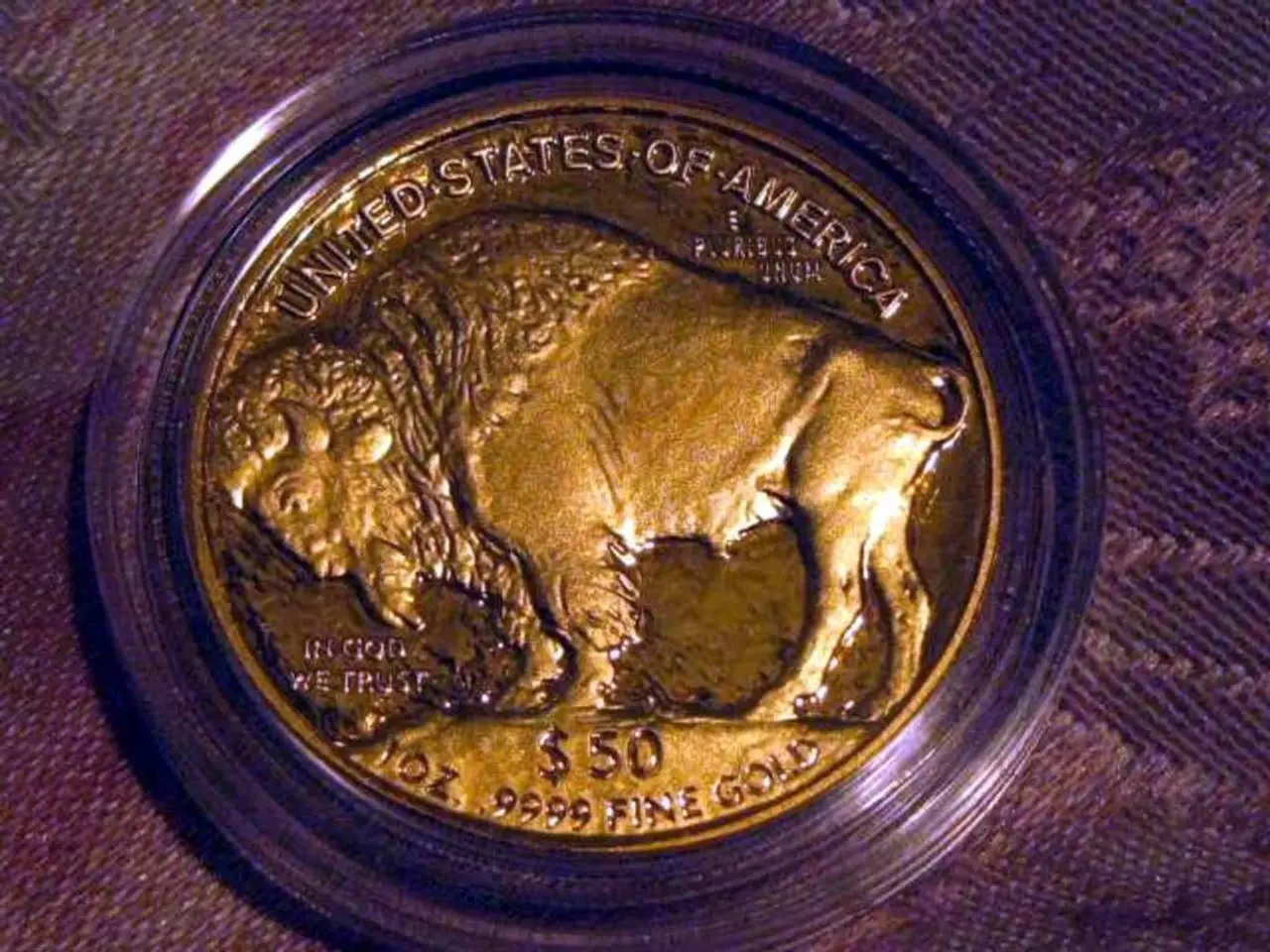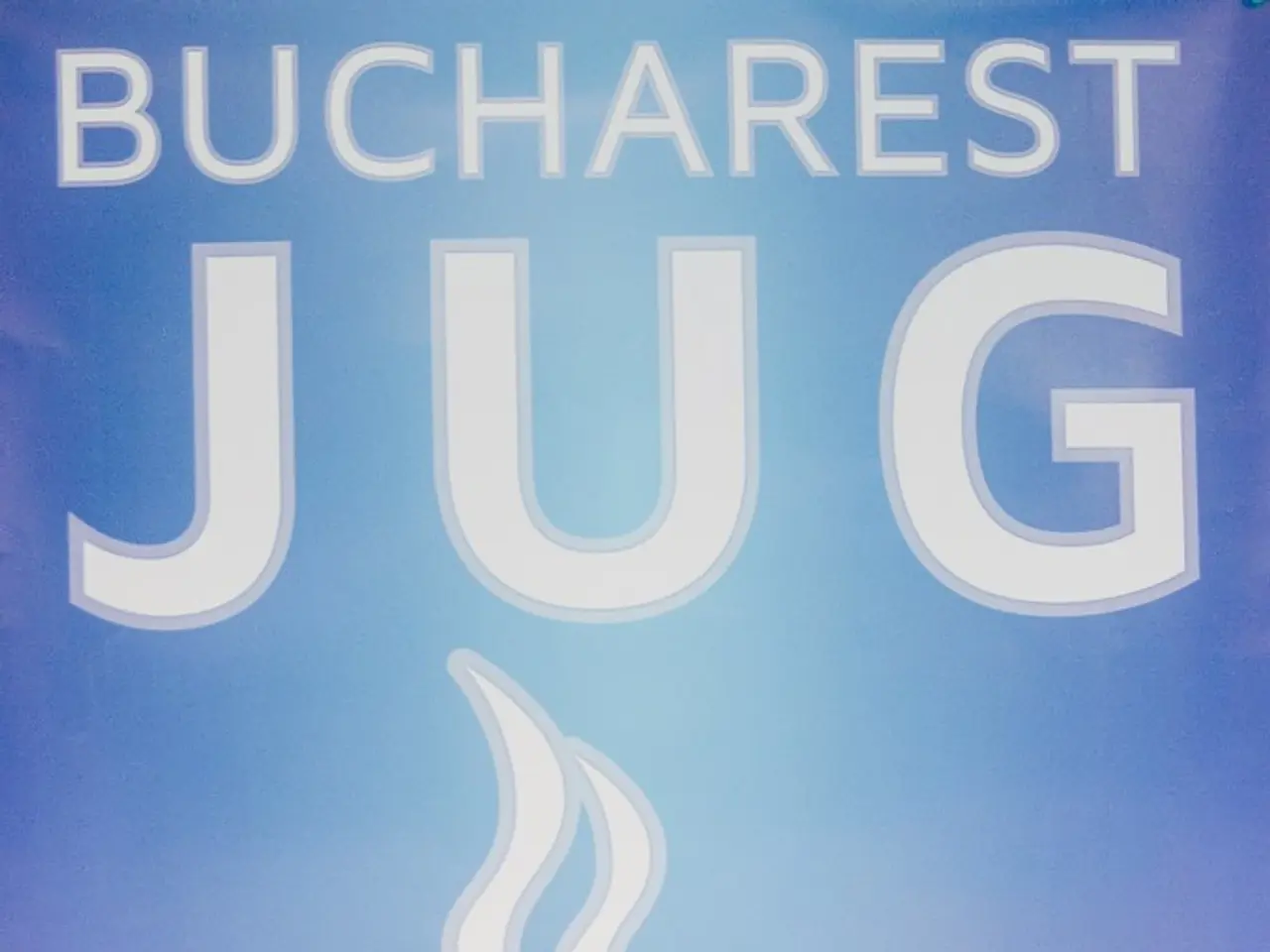Federal Reserve maintains elevated interest rates in the United States
In the heart of economic policy, a significant rift has emerged between US President Donald Trump and Federal Reserve Chair Jerome Powell over interest rate cuts. This disagreement stems from contrasting views on how to manage the US economy amidst inflation and tariff-induced uncertainties.
Trump is advocating for interest rate cuts, believing that lowering rates would boost economic performance and reduce government debt interest payments. However, Powell and the Fed have chosen to hold rates steady, citing concerns about inflation risks, particularly from tariffs, and the need to maintain a cautious approach given the current labor market conditions[1][2].
Trump has been vocal in his criticism of Powell, labelling him "too late," "too angry," and "too political." He has accused Powell of costing the country trillions of dollars, while Powell maintains that inflation remains above the Fed’s longer-run target of 2% and that economic conditions do not yet warrant a rate cut. Powell also emphasizes that the labor market is near full employment, which supports the Fed’s current stance[2].
The implications for the US economy are significant. If the Fed were to cut rates prematurely, it could risk reigniting inflation, especially amid tariff-related price pressures. On the other hand, keeping rates steady aims to prevent inflation from accelerating but may slow economic growth or increase borrowing costs, concerns Trump has expressed[1][2].
The ongoing tension reflects a broader policy challenge where the Fed’s independence and focus on long-term economic stability clash with political pressure for short-term stimulus.
The US Federal Reserve has kept the key interest rate unchanged, with the range remaining between 4.25 and 4.5 percent. Trump has expressed a desire for a lower interest rate to stimulate the US economy. However, it is important to note that Powell does not decide on the key rate alone - the Federal Open Market Committee makes this decision[1][2].
At the interest rate decision on Wednesday, not all members of the Federal Open Market Committee agreed to maintain the current interest rate. Two of the eleven members, Michelle Bowman and Christopher Waller, voted for a rate cut[1]. Market observers expect the first rate cut as early as the September meeting.
The question of whether a US president can dismiss a central bank chair is not fully resolved. Trump has threatened to fire Powell, but the legal hurdles for this are high[1].
The US labor market has shown robustness, and the International Monetary Fund (IMF) has expressed concern about partly increased import prices in the US due to tariffs. Tariffs are borne by importers, retailers, and ultimately consumers[1].
Rumours suggest that Christopher Waller, who voted for a rate cut, has ties to Trump, with the U.S. President reportedly considering him, along with Treasury Secretary Steven Mnuchin, as a potential successor to Powell[1]. Powell's term ends in May next year.
[1] The New York Times. (2019). Trump and Powell Have a Showdown Over Interest Rates. [online] Available at: https://www.nytimes.com/2019/07/31/business/economy/trump-powell-interest-rates.html
[2] CNBC. (2019). Trump says Fed Chair Powell is 'too timid' on interest rates. [online] Available at: https://www.cnbc.com/2019/08/01/trump-says-fed-chair-powell-is-too-timid-on-interest-rates.html
- Despite Trump's advocacy for interest rate cuts in an effort to boost economic performance and reduce government debt interest payments, the Federal Reserve, led by Chair Jerome Powell, has opted to hold rates steady, citing concerns about inflation risks and the need for caution given the current labor market conditions.
- The ongoing tension between Trump and Powell over interest rate cuts is not just a matter of business finance, but also intertwines with politics, as the Fed's independence and focus on long-term economic stability clash with political pressure for short-term stimulus.




